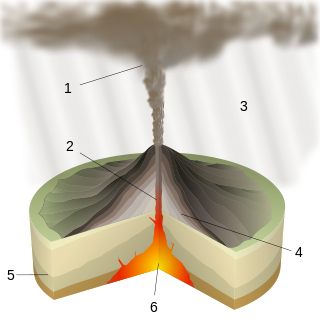
A Roman villa was typically a farmhouse or country house built in the Roman Republic and the Roman Empire, sometimes reaching extravagant proportions.

Gaius Plinius Secundus, called Pliny the Elder, was a Roman author, naturalist and natural philosopher, and naval and army commander of the early Roman Empire, and a friend of the emperor Vespasian. He wrote the encyclopedic Naturalis Historia, which became an editorial model for encyclopedias. He spent most of his spare time studying, writing, and investigating natural and geographic phenomena in the field.

Gaius Plinius Caecilius Secundus, born Gaius Caecilius or Gaius Caecilius Cilo, better known as Pliny the Younger, was a lawyer, author, and magistrate of Ancient Rome. Pliny's uncle, Pliny the Elder, helped raise and educate him.

Como is a city and comune in Lombardy, Italy. It is the administrative capital of the Province of Como.

John Boyle, 5th Earl of Cork and 5th Earl of Orrery, FRS was a writer and a friend of Jonathan Swift, Alexander Pope and Samuel Johnson.
This article contains information about the literary events and publications of 1694.
This article presents lists of the literary events and publications in 1664.

Lake Como, also known as Lario, is a lake of glacial origin in Lombardy, Italy. It has an area of 146 square kilometres (56 sq mi), making it the third-largest lake in Italy, after Lake Garda and Lake Maggiore. At over 400 metres (1,300 ft) deep, it is the fifth deepest lake in Europe, and the deepest outside Norway; the bottom of the lake is more than 200 metres (660 ft) below sea level.

Città di Castello ; "Castle Town") is a city and comune in the province of Perugia, in the northern part of Umbria. It is situated on a slope of the Apennines, on the flood plain along the upper part of the river Tiber. The city is 56 km (35 mi) north of Perugia and 104 km (65 mi) south of Cesena on the motorway SS 3 bis. It is connected by the SS 73 with Arezzo and the A1 highway, situated 38 km (23 mi) west. The comune of Città di Castello has an exclave named Monte Ruperto within Marche.
Roger Boyle, 1st Earl of Orrery, styled Lord Broghill from 1628 to 1660, was an Anglo-Irish soldier and politician who sat in the House of Commons of England at various times between 1654 and 1679. Boyle fought in the Irish Confederate Wars and subsequently became known for his antagonism towards Irish Catholics and their political aspirations. He was also a noted playwright and writer on 17th century warfare.

Bellagio is a comune (municipality) in the Province of Como in the Italian region of Lombardy. It is located on Lake Como, also known by its Latin-derived name Lario, whose arms form an inverted Y. The triangular land mass at the base of the inverted Y is the Larian Triangle: at its northern point sits Bellagio, looking across to the northern arm of the lake and, behind it, the Alps. It has always been famous for its location. It belongs to a mountain community named Comunità montana del Triangolo lariano, with base in Canzo.

Plinian eruptions or Vesuvian eruptions are volcanic eruptions marked by their similarity to the eruption of Mount Vesuvius in 79 AD, which destroyed the ancient Roman cities of Herculaneum and Pompeii. The eruption was described in a letter written by Pliny the Younger, after the death of his uncle Pliny the Elder.

A rhythmic spring is a cold water spring from which the flow of water either varies or starts and stops entirely, over a fairly regular time-scale of minutes or hours. Compared to continuously-flowing springs, rhythmic springs are uncommon, with the number worldwide estimated in 1991 to be around one hundred.

The Italian Renaissance garden was a new style of garden which emerged in the late 15th century at villas in Rome and Florence, inspired by classical ideals of order and beauty, and intended for the pleasure of the view of the garden and the landscape beyond, for contemplation, and for the enjoyment of the sights, sounds and smells of the garden itself.

The Italian garden (or giardino all'italiana is best known for a number of large Italian Renaissance gardens which have survived in something like their original form. In the history of gardening, during the Renaissance, Italy had the most advanced and admired gardens in Europe, which greatly influenced other countries, especially the French formal garden and Dutch gardens and, mostly through these, gardens in Britain.

Of the many eruptions of Mount Vesuvius, a major stratovolcano in southern Italy, the most famous is its eruption in 79 AD, which was one of the deadliest in European history. The eruption of Mount Vesuvius in 79 AD has been called one of the most well-known volcanic eruptions in history.
Michael James Dear is an urban geographer and educator. He has written several books, including Why Walls Won't Work: Repairing the US-Mexico Divide, which was published by Oxford University Press in 2013. He teaches City and Regional Planning at the College of Environmental Design of the University of California, Berkeley.

Sigismondo Boldoni was an Italian writer, philosopher, and physician. Boldoni was born in Bellano and died in Pavia from the plague shortly before his 33rd birthday. At the time of his death he held the principal chair in philosophy at the University of Pavia. His literary works included a description of the geography and history of Lake Como entitled Larius and the epic poem La caduta de' Longobardi. His letters of 1629 describing the advance of invading German armies in the region around Lake Como and the plague epidemic they brought in their wake were used by Manzoni as a source for his 1827 novel I Promessi Sposi.

Frances Sussna is an American educator and innovator best known for her work in multi-cultural education. Her methods of motivating students of diverse ethnic backgrounds to higher achievement and social responsibility, including respect of self and others and skills of peaceful conflict resolution, won her the support of the Ford Foundation, Rockefeller Foundation, the Lilly Endowment, Rosenberg Foundation, and the San Francisco Foundation, among others.

Villa Pliniana is a villa originally built in 1573, on the site of a more modest pre-existing building, in the territory of the municipality of Torno, in the province of Como, on the right bank of the western branch of Lake Como.
















